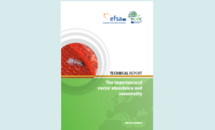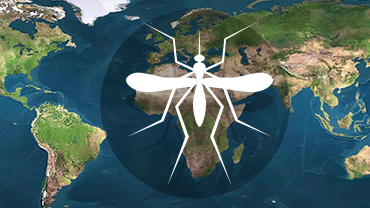The importance of vector abundance and seasonality
The objective of this document is to assess the degree to which estimates of vector abundance and seasonality, for each vector group, can be used to inform assessments of epidemiological concepts.
Executive Summary
This joint ECDC-EFSA report assesses whether vector count data (abundance) and the way these change throughout the year (seasonality) can provide useful information about vector-borne diseases epidemiological processes of interest, and therefore, whether resources should be devoted to collecting such data. The document also summarises what measures of abundance and seasonality can be collected for each vector group (mosquitoes, sandflies, midges and ticks), lists the gaps in the sampling coverage and provides guidance for prioritising the acquisition of information.
Knowing where vector species occur is crucial for the assessment of vector-borne disease risk. Collecting abundance and seasonality data through field sampling is, however, more expensive and time consuming than collecting most other vector-related data. The importance of abundance and seasonality data varies considerably according to the vector group and the epidemiological concept of interest. Epidemiological concepts of tick-borne disease are less informed by abundance data than are those of the other vector groups, and presence/absence data of ticks may be sufficient in conjunction with other factors. Abundance data are generally considered relevant to pathogen establishment and transmission but less useful to inform early warning systems, estimates of the likelihood of pathogen persistence and —for sandflies, midges and ticks— to inform targeting of control measures.
The conclusions on this report were based on VectorNet group discussions, field sampling studies, and review of both peer-reviewed and grey literature. VectorNet is a European network for gathering and sharing data on the geographic distribution of arthropod vectors of disease agents affecting humans and livestock. Finally, the report notes that any form of extensive vector sampling depends not only on resources to fund the sampling programmes, but also on the availability of entomologists that have the skills to implement surveillance and monitoring programmes.
Download










